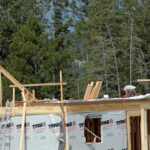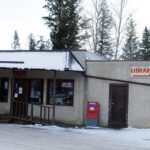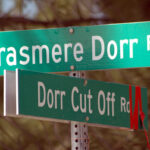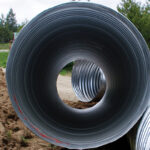Home »

Blame the smoke on us, not Mother Nature
 “Perceptions,” by Gerry Warner
“Perceptions,” by Gerry Warner
Op-Ed Commentary
What a horrific summer! At least today, the smoke finally started to clear, but I still can’t see the Rockies and as a Kootenay boy, born and raised, that’s my inalienable right and when that right is taken away from me, I get angry.
But I’m not angry with Mother Nature for wreaking havoc on us even though Mother Nature is partially to blame for the drought as well as the lightning and windstorms that have turned this summer into a smoky Armageddon for two years in a row. Mother Nature, after all, has gotten help in creating this wild fire disaster covering B.C. and many other parts of the continent.
Help from us. And that’s the real tragedy in this calamity. We’ve done it to ourselves through our greed, apathy and indifference and if things don’t change soon we could be pushed past the tipping point that will end civilization-as-we-know-it. Let me explain. We’re now living in what scientists call the Anthropocene Era, the era in which our industrial civilization is the driving force that’s shaping our very earth in terms of its climate, its oceans, its landforms, its rivers, its plants and the habitable regions where living things like us can flourish or die. And it’s happening very quickly; so quickly that the process may now be irreversible.
That’s why we’ve had this terrible smoke pall hanging over us most of the summer, but a little honest reflection leads to the undeniable conclusion that we ourselves are mostly to blame.
Look at the picture above. It was taken on the Yellowhead Highway about 30 miles east of Prince George where the smoke was so bad last week that it was dark outside in the middle of the day. But this picture wasn’t taken the other day or last week for that matter. It was taken more than 30 years ago in the now-ancient film era of photography.
It was a little after 4 p.m. and you can barely see the sun in the left-hand corner of the picture and notice that the vehicle coming towards me has its headlights on in the era before lights were on automatically. It was taken in the Willow River valley near a clear-cut so large you could see it from outer space. No wonder it looked like an atomic bomb explosion.
But it wasn’t an exploding bomb. And, if you think you’re looking at a forest fire, you’re dead wrong. In fact, there was another mushroom cloud of smoke billowing up in the other direction, but I couldn’t get both in my camera. What you’re looking at is a man-made, deliberately set, industrial slash fire, a standard method of so-called silviculture in B.C. for more than 100 years. And it was an abomination! But quite frankly few in BC gave a shit about slash fires back then. Nor do they now.
In truth, slash burning (torching logging waste) has been modified slightly for the better today because they now push the slash into piles and burn it in the late fall or winter when atmospheric conditions are more conducive to the barbaric practice and the smoke columns less noticeable. Thirty to 100 years ago they just torched the clear-cuts in a practice they called “broadcast burning” that often got away and turned thousands of acres of pristine B.C. old growth into ashes. And that occurred no matter which political party formed the government.
So, what’s the connection between the slash fires of yore in B.C. and the mega-fires we’re seeing with more frequency today? There are several.
For one, wildfires today are mostly in second-growth because so much of the old growth has been cut in B.C. and fires start more easily in second-growth forests with much more brush and woody debris on the ground because of previous industrial logging. In fact, it’s extremely difficult for fires to start in old growth because of the well-spaced larger trees, far less bush and waste on the ground and the damp micro-climates that lofty old growth forests create.
Growing up, I fought forest fires for a decade in the West Kootenay and we were often told to direct fires towards standing “green” timber (old growth) where the flames would often burn out because there was less fuel on the ground and the branches were higher on old growth trees.
I could go on, but I only make myself seethe with anger when I write about the wasteful and abhorrent industrial forest practises in B.C. But the next time you try to make out the Rocky Mountain skyline to the smoky east of us think of two things; climate change and industrial logging.
Both are mainly man-made.
– Gerry Warner is a retired journalist and former forest fire fighter who knows how to operate a Pulaski and a “piss can” in the good old days of B.C. forest fire fighting.







